Collar Care requires two people to complete.
Starting Position
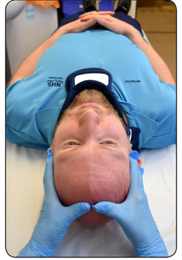
The Patient should be lying down in a straight line, on a flat bed and should be reminded to stay still whilst collar care is performed.
One person should hold the patients head still whilst the other performs collar care.
The person holding the patients head should remain in place until the collar is refitted
There should be sufficient space to stand and hold the patients head without obstruction (any headboards should be removed)
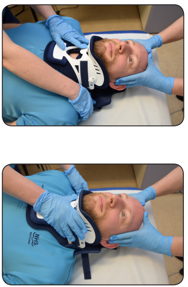
Step 1
With the head being held, undo the Velcro straps
Step 2
Remove the front part of the collar
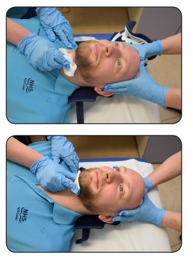
Step 3
With the collar off, the skin underneath can be washed with mild soapy water and dried
Step 4
Ensure the skin is checked for any red or sore areas. If there are any sore areas apply appropriate pressure relieving dressings
Step 5
Remove the back panel by pushing the back of the collar into the bed to prevent the patient’s head from moving with it
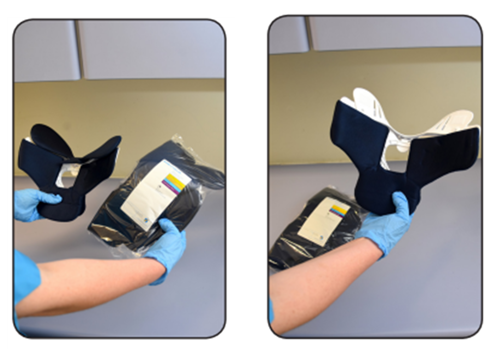 Step 6
Step 6
With the collar off, the pads can be removed and replaced with clean, dry ones (supplied)
Ensure the correct size replacement pads are used (only the Stout and XS sizes have specialised pads, the size is written on the front left side of the collar)
 Step 7
Step 7
With the grey side of the pads facing out (pale blue side towards patient’s skin) apply the pads and ensure there are no edges of the plastic collar frame exposed
Step 8
Ensure the angulation buttons are locked to ensure the collar does not move when in position. In the locked position the “arrow” is
horizontal to the adjustment hole
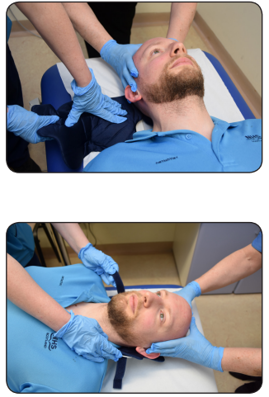
Step 9
When the collar is refitted the head should still be being held securely. Push down into the mattress and push the back of the Collar through
Step 10
Once under the neck ensure the straps are symmetrical so it is positioned centrally

Step 11
To apply the front piece of the collar “flare” the sides of the front out and slide it up the chest wall and “Scoop” it under the chin

Step 12
Angle the sides of the collar up towards the ears. This prevents skin trapping on top of the shoulders and allows the collar to wrap closely around the neck.
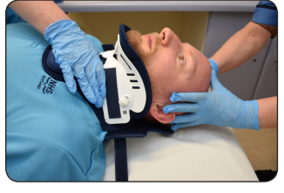
Step 13
Holding the front securely curl the ends of the collar snugly against the patient’s neck and apply the Velcro straps. The back should overlap on top of the front piece.

Step 14
Once the Velcro straps are applied check the collar to ensure it fits snuggly

Step 15
If readjustment is needed hold the plastic front piece as shown and undo the Velcro strap. Using your thumb, move the front piece and
push the collar up towards their ear until you are happy with the fit. Ensure the head is still held firmly

Step 16
Ensure the straps are lined up correctly (Velcro on Velcro)
Step 17
Before releasing the head hold, ensure the collar is symmetrical, snug fitting and all the edges of the white hard collar are covered with the grey/blue pads to ensure it doesn’t rub the skin






 Step 6
Step 6 Step 7
Step 7





